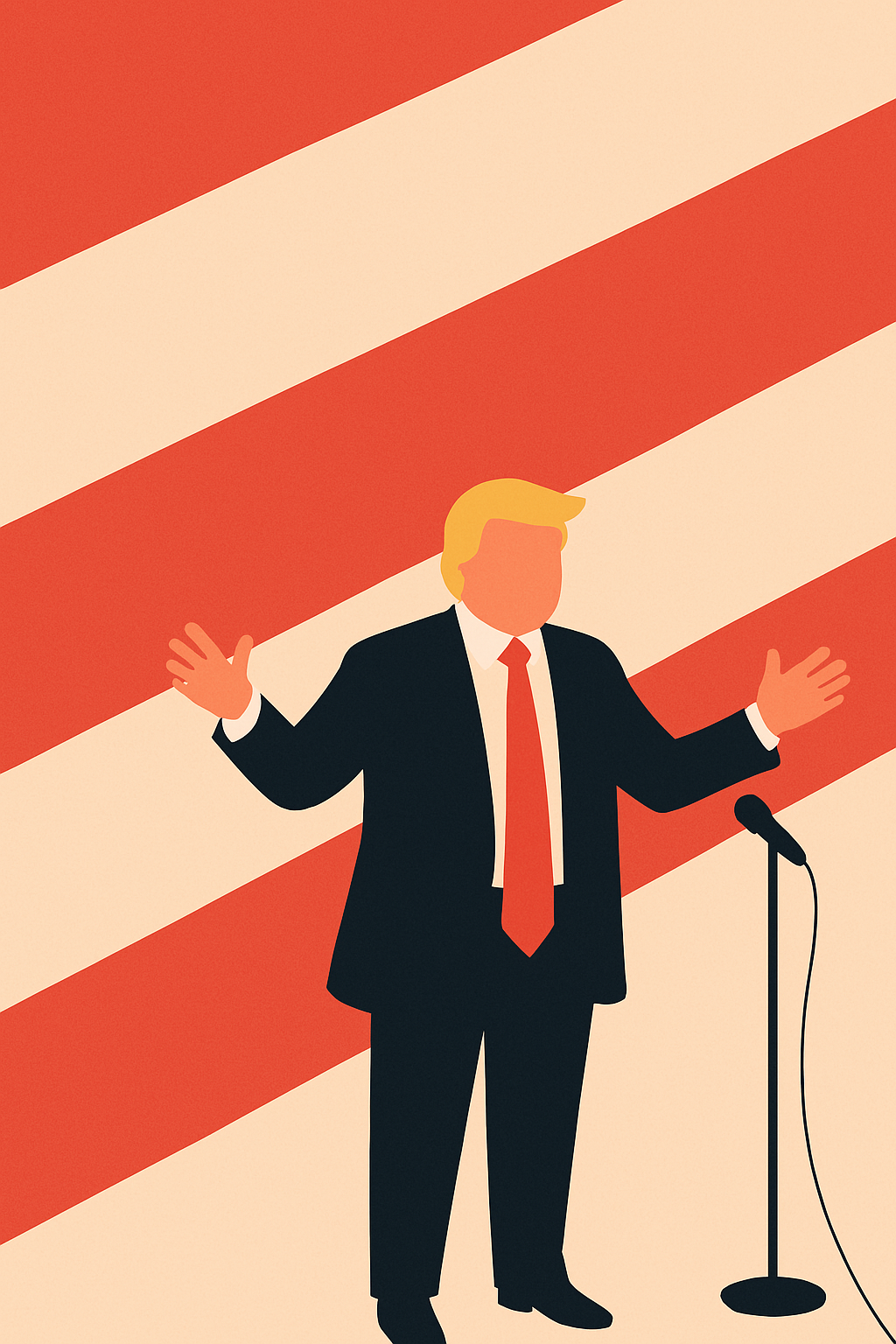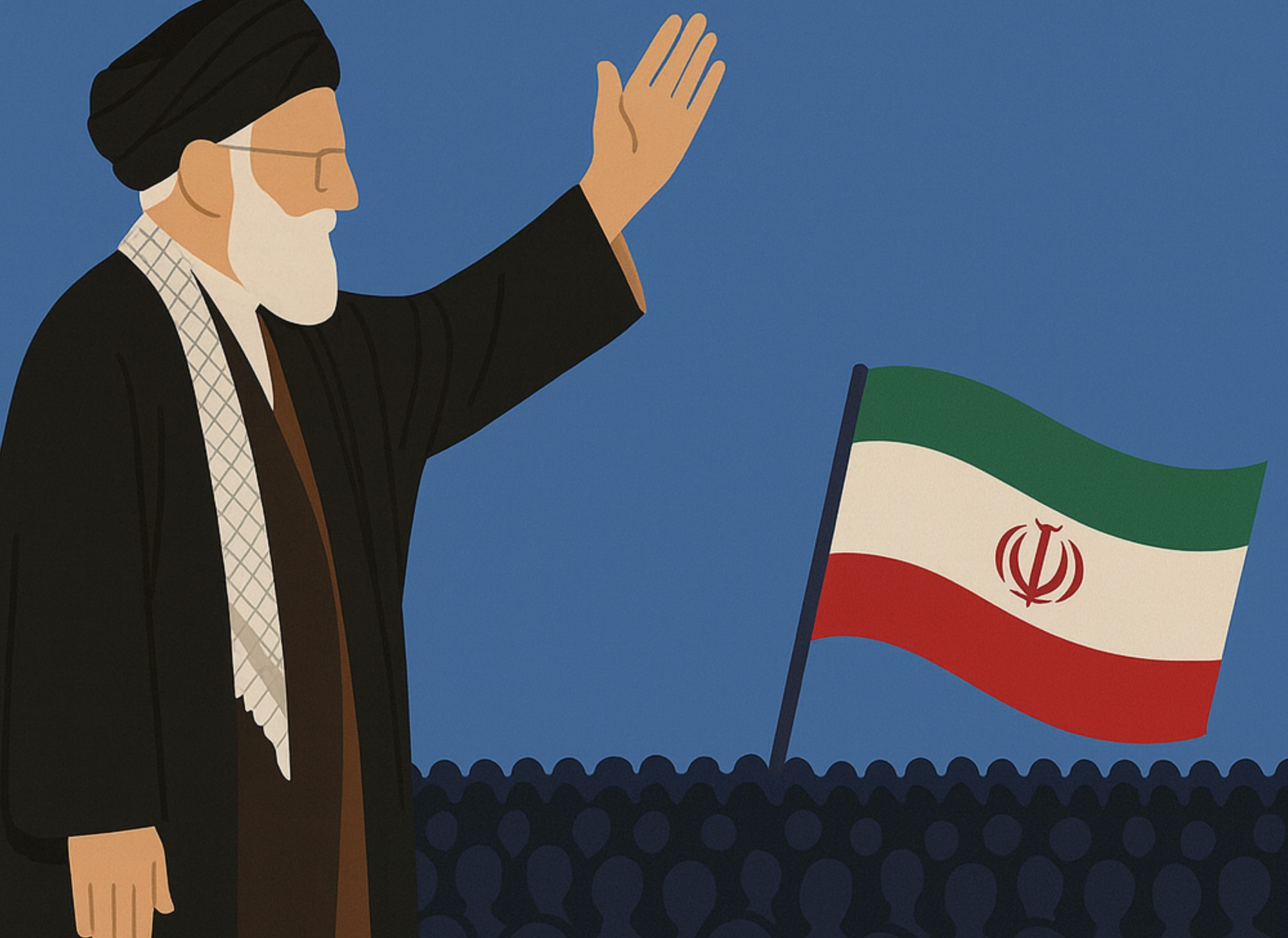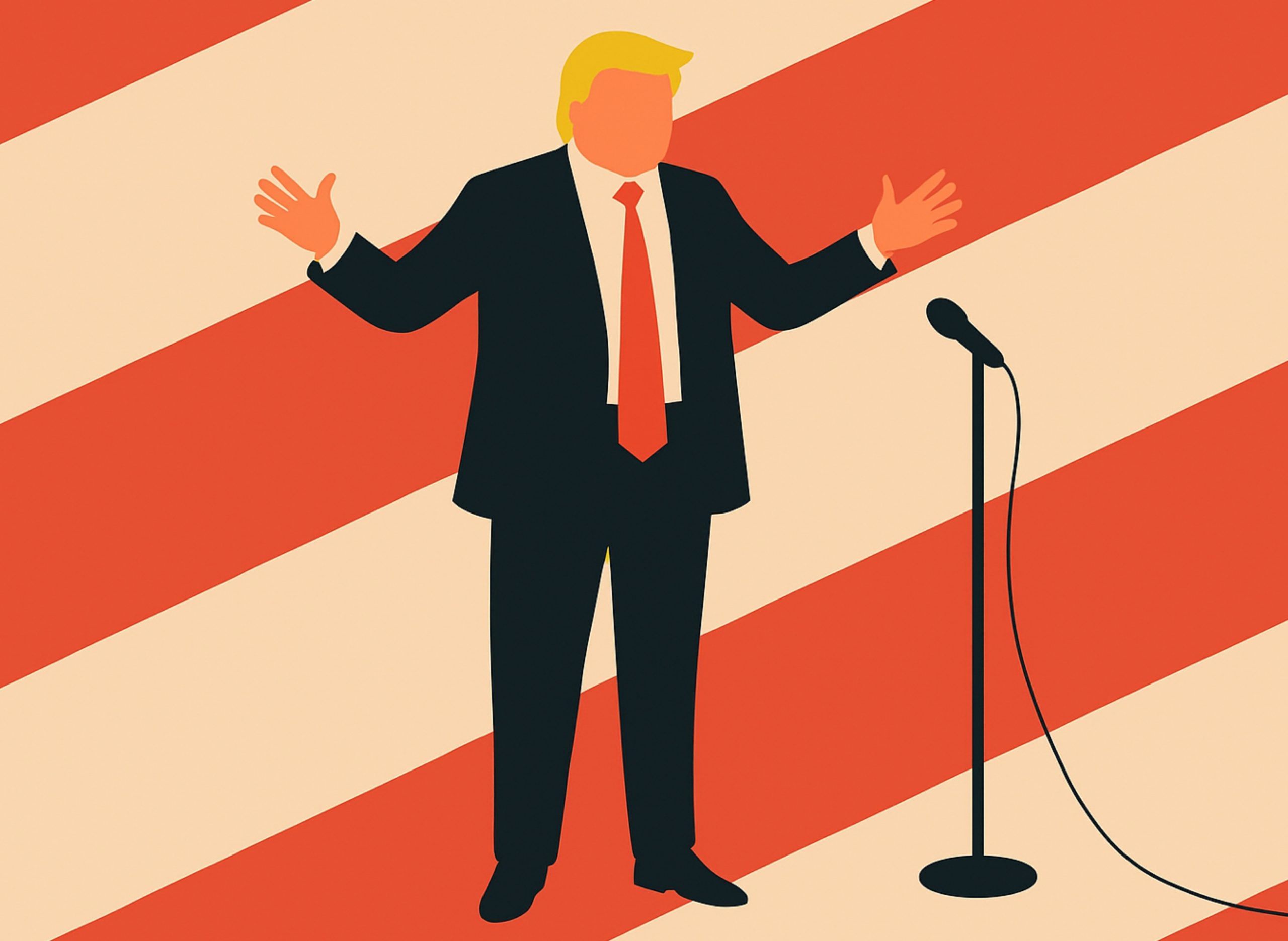

The United States remains the most powerful actor on the global stage. Its economy is unmatched, its cultural reach unrivaled, and its military capabilities exceed those of its nearest rivals combined. America’s greatness, ultimately, rests on the foundation of a dynamic economy—one that fuels innovation, underwrites global influence, and supports the tools of diplomacy and defense alike. But strength is not the same as sustainability. Recent years have revealed the extent to which American foreign policy is vulnerable not to external adversaries, but to internal disruption. The return of Donald Trump to the center of Republican politics—and the ideological volatility his movement has introduced—has shaken assumptions about the reliability of U.S. global engagement.
Allies now hedge, adversaries probe, and diplomats are forced to navigate a strategic environment shaped more by electoral swings than enduring doctrine. This is not a story of collapse. Democracies have the right to choose badly. Britain did it with Boris Johnson, Italy with Silvio Berlusconi, Russia with Boris Yeltsin. They survived. America is no exception. The sun will rise tomorrow. Institutions endure. But resilience is not automatic. It requires tending. And the greatest threat to American global leadership may come not from Beijing or Moscow, but from Washington’s own habit of unforced errors. Trumpism, as a governing approach, challenges the postwar norms that once gave American foreign policy its strategic clarity: multilateralism, institutional continuity, and the idea that U.S. leadership serves more than narrow self-interest. Whether at the United Nations or the North Atlantic Treaty Organization (NATO), whether negotiating trade or shaping climate policy, America has become more difficult to predict and harder to trust.
I have felt this shift firsthand—in conversations with foreign officials, partners, and civil society leaders from Paraguay to Ghana to Australia. Increasingly, they do not ask what America believes, but which America they are dealing with—and for how long. This article explores whether a sustainable American foreign policy is still possible in an era when domestic politics overshadow strategic consensus. It argues that continuity in foreign policy depends on political stability at home—and that the erosion of that stability is a self-inflicted risk. American greatness is rooted in economic vitality and democratic legitimacy. When those are threatened from within, it is not only the domestic agenda that suffers—but the credibility of the U.S. as a global leader.
served in senior foreign policy positions in the Biden, Trump, Obama and Bush administrations. As a senior career diplomat, he served in Ghana, Nigeria, Paraguay, Iraq, Paraguay, the Eastern Caribbean, Bolivia, Nicaragua and Guatemala.
The Architecture of American Order
In the aftermath of World War II, the United States consciously designed a global order rooted in collective security, open markets, and the rule of law. Institutions like the United Nations, the International Monetary Fund, and the World Bank were not just mechanisms of influence—they were expressions of a belief that American prosperity and global stability were linked. The geopolitical landscape of the late 1940s demanded innovation and vision. American policymakers understood that retreat into isolationism, as after World War I, would invite instability and allow rivals to shape the global order. Instead, leaders like George Marshall, Dean Acheson, and Harry Truman articulated a vision of U.S. leadership anchored in principles of cooperation and institutional strength. The Marshall Plan was more than economic aid—it was a political statement of solidarity with democratic Europe.
The creation of NATO in 1949 further cemented the idea that American security was inseparable from the security of its allies. This forward-leaning posture was not uncontested at home, but it gained broad bipartisan support. The ensuing decades saw the growth of international legal norms, free trade regimes under the General Agreement on Tariffs and Trade (GATT) and later the World Trade Organization (WTO), and the embedding of U.S. leadership in global governance structures. The American-led order was not without flaws or contradictions, but it provided relative peace, prosperity, and predictability in an otherwise volatile century. Strategic doctrines emerged to translate American values into action: the Truman Doctrine to contain Soviet expansion, the Reagan Doctrine to confront authoritarianism, and the Clinton Doctrine to defend human rights in a globalizing world.
Behind these doctrines stood institutions that provided ballast: a professional and non-partisan career diplomatic corps, a career military establishment, and a web of alliances forged through NATO and beyond. In my own experience, I often saw how the credibility of U.S. diplomats abroad stemmed less from their charisma than from the perception that they spoke for a system larger than themselves. That system—rooted in predictability and principle—was the real source of American soft power. Nowhere was continuity more evident than within the Republican foreign policy establishment. From Dwight Eisenhower through George H.W. Bush, the GOP (short for the “Grand Old Party,” as the Republican Party is commonly known in U.S. politics) embraced a vision of international engagement grounded in deterrence, order, and alliance management. The Cold War did not eliminate debate—realists and idealists vied for influence—but the boundaries of disagreement were clear.
The Architecture of American Order
In the aftermath of World War II, the United States consciously designed a global order rooted in collective security, open markets, and the rule of law. Institutions like the United Nations, the International Monetary Fund, and the World Bank were not just mechanisms of influence—they were expressions of a belief that American prosperity and global stability were linked. The geopolitical landscape of the late 1940s demanded innovation and vision. American policymakers understood that retreat into isolationism, as after World War I, would invite instability and allow rivals to shape the global order. Instead, leaders like George Marshall, Dean Acheson, and Harry Truman articulated a vision of U.S. leadership anchored in principles of cooperation and institutional strength. The Marshall Plan was more than economic aid—it was a political statement of solidarity with democratic Europe.
The creation of NATO in 1949 further cemented the idea that American security was inseparable from the security of its allies. This forward-leaning posture was not uncontested at home, but it gained broad bipartisan support. The ensuing decades saw the growth of international legal norms, free trade regimes under the General Agreement on Tariffs and Trade (GATT) and later the World Trade Organization (WTO), and the embedding of U.S. leadership in global governance structures. The American-led order was not without flaws or contradictions, but it provided relative peace, prosperity, and predictability in an otherwise volatile century. Strategic doctrines emerged to translate American values into action: the Truman Doctrine to contain Soviet expansion, the Reagan Doctrine to confront authoritarianism, and the Clinton Doctrine to defend human rights in a globalizing world.
Behind these doctrines stood institutions that provided ballast: a professional and non-partisan career diplomatic corps, a career military establishment, and a web of alliances forged through NATO and beyond. In my own experience, I often saw how the credibility of U.S. diplomats abroad stemmed less from their charisma than from the perception that they spoke for a system larger than themselves. That system—rooted in predictability and principle—was the real source of American soft power. Nowhere was continuity more evident than within the Republican foreign policy establishment. From Dwight Eisenhower through George H.W. Bush, the GOP (short for the “Grand Old Party,” as the Republican Party is commonly known in U.S. politics) embraced a vision of international engagement grounded in deterrence, order, and alliance management. The Cold War did not eliminate debate—realists and idealists vied for influence—but the boundaries of disagreement were clear.


Even neoconservatism, at its height in the early 2000s, still operated within the presumption that America had a role to play in shaping the international order, however misguided the means. This was a party that believed in expertise. National security decisions were not made on cable television but in Situation Rooms and secure briefings. Foreign assistance, military deployments, and arms control agreements were debated with an eye toward long-term impact. Whether one agreed with the policy was beside the point—the process conferred legitimacy. It made America a reliable actor in a world that depended on reliability. That consensus no longer holds.
Diplomacy Derailed
The ideological foundation of Trump’s foreign policy can be traced to his 2016 campaign and his first term in office. “America First” was not simply a slogan; it was a repudiation of the internationalist consensus that had defined U.S. strategy for generations. Defined largely by Trump himself, it favored unilateralism, nationalism, and the reduction of global commitments in favor of transactional relationships. Critics described it as isolationist; supporters called it realist. What was clear was that the traditional guardrails of U.S. diplomacy—stability, credibility, and alliances—were sidelined. The “America First” doctrine reversed decades of U.S. leadership strategy. Agreements were discarded, alliances disparaged, and international obligations recast as burdens.
From the Paris Agreement on climate change to the Joint Comprehensive Plan of Action with Iran, Trump’s tenure was marked by an unraveling of previous commitments without clear alternatives. At the institutional level, the damage was both symbolic and operational. The Department of State was sidelined, foreign assistance politicized, and national security briefings replaced by public pronouncements on social media. Career foreign service officers—once seen as custodians of continuity—were marginalized or driven out. The cost was not only internal morale but external confidence. Allies accustomed to steady engagement were forced to reckon with unpredictability as the new norm. Trump’s ascent also reshaped the Republican Party’s internal dynamics. What was once a coalition of realists, internationalists, and neoconservatives became an uneasy mix of nationalists, isolationists, and populist skeptics of foreign engagement.
Even neoconservatism, at its height in the early 2000s, still operated within the presumption that America had a role to play in shaping the international order, however misguided the means. This was a party that believed in expertise. National security decisions were not made on cable television but in Situation Rooms and secure briefings. Foreign assistance, military deployments, and arms control agreements were debated with an eye toward long-term impact. Whether one agreed with the policy was beside the point—the process conferred legitimacy. It made America a reliable actor in a world that depended on reliability. That consensus no longer holds.
Diplomacy Derailed
The ideological foundation of Trump’s foreign policy can be traced to his 2016 campaign and his first term in office. “America First” was not simply a slogan; it was a repudiation of the internationalist consensus that had defined U.S. strategy for generations. Defined largely by Trump himself, it favored unilateralism, nationalism, and the reduction of global commitments in favor of transactional relationships. Critics described it as isolationist; supporters called it realist. What was clear was that the traditional guardrails of U.S. diplomacy—stability, credibility, and alliances—were sidelined. The “America First” doctrine reversed decades of U.S. leadership strategy. Agreements were discarded, alliances disparaged, and international obligations recast as burdens.
From the Paris Agreement on climate change to the Joint Comprehensive Plan of Action with Iran, Trump’s tenure was marked by an unraveling of previous commitments without clear alternatives. At the institutional level, the damage was both symbolic and operational. The Department of State was sidelined, foreign assistance politicized, and national security briefings replaced by public pronouncements on social media. Career foreign service officers—once seen as custodians of continuity—were marginalized or driven out. The cost was not only internal morale but external confidence. Allies accustomed to steady engagement were forced to reckon with unpredictability as the new norm. Trump’s ascent also reshaped the Republican Party’s internal dynamics. What was once a coalition of realists, internationalists, and neoconservatives became an uneasy mix of nationalists, isolationists, and populist skeptics of foreign engagement.
The “America First” doctrine reversed decades of U.S. leadership strategy.
Strategic doctrine gave way to soundbites. Grand strategy was displaced by grievance politics. This fragmentation has left the GOP without a coherent foreign policy vision. One wing calls for restraint and retrenchment. Another for hardline posturing against China and Iran. Still others revert to Cold War reflexes or transactional deal-making. The result is strategic schizophrenia. Having served through multiple administrations, I’ve watched senior career officers brief new political appointees with the best available intelligence and carefully crafted strategic options—only to see those efforts reduced to slogans or discarded entirely. In a world of real-time crises and long-term rivalry, this volatility is not sustainable. The question is no longer whether U.S. foreign policy will change—it is how radically and how often. And that, in turn, is what keeps allies awake at night.
Swing Statecraft
In theory, strategy provides the connective tissue between administrations. In practice, U.S. foreign policy has begun to resemble a pendulum. The pivot from George W. Bush to Barack Obama, then to Donald Trump and back to Joe Biden, created whiplash on everything from climate commitments to trade policy to Middle East diplomacy. Now, with Trump’s return, the swing could again be extreme. For allies, this churn erodes confidence. NATO partners wonder whether the United States will honor collective defense obligations. In the Indo-Pacific, countries recalibrate their hedging strategies. And across multilateral institutions, the specter of American retreat looms over every agreement. Those who gain from the chaos are watching. Russia thrives in the vacuum left by Western ambivalence. China uses diplomatic inconsistency to build its own credibility as a partner. The Belt and Road Initiative did not emerge in a vacuum—it stepped into a gap created by American distraction.
Foreign policy is, at its core, a long game. Treaties, alliances, and military basing agreements are made not for one term, but for generations. When those arrangements are reinterpreted—or threatened—with each electoral cycle, the result is instability. Recent actions of the Trump Administration further compound these concerns. A return to aggressive tariff policy has already introduced renewed instability into global markets. Tariffs have been imposed not only on China but also threatened against Mexico, India, and the European Union. The international financial institutions have adjusted world growth forecasts downward in response to these trade tensions. The resulting uncertainty increases the cost of capital, discourages investment, and may drive up inflation in the U.S. itself.
Separately, mass deportations of undocumented migrants and the non-renewal of Temporary Protected Status (TPS) for many groups under U.S. protection send chilling signals about American reliability. In recent months, TPS protections have not been extended for citizens of El Salvador, Honduras, Nepal, and Nicaragua. At the same time, new travel bans have been imposed on citizens from Iran, Syria, Somalia, and Venezuela. These are not merely administrative decisions—they are geopolitical messages. Trust, once lost, is hard to regain. Intelligence sharing requires confidence in discretion. Joint military exercises require predictability. Trade agreements depend on regulatory consistency. When those are absent, partners hedge, adversaries test, and global norms fray. I’ve seen firsthand how partners in Africa and Latin America now embed contingencies for a possible policy reversal in their cooperation with the United States. The message is clear: America is no longer presumed to be steady. And in geopolitics, perception is power.
Beyond Trump
The immediate question is how far Trumpism will extend during his current term in office. The deeper one is whether his foreign policy orientation will outlast him. The movement he leads is not simply electoral—it is ideological. Its distrust of institutions, disdain for diplomacy, and embrace of zero-sum nationalism have reshaped the Republican worldview. But I believe Trump is now at the apogee of his political power. He cannot run for a third term. The Supreme Court may act as a check on his expansive use of executive power. And if history repeats itself, he may lose the House of Representatives in the 2026 midterms—just as he did in 2018. If that happens, his ability to legislate without compromise will evaporate. Worse, the House could tie up his administration in investigations and hearings. In his first term, he was impeached twice.
Even if a different leader emerges, the gravitational pull of Trumpism may persist. The party’s realignment has marginalized its internationalist wing. That leaves open the possibility of further unpredictability in the years ahead, regardless of who occupies the Oval Office. Restoring a sustainable foreign policy requires more than waiting out a single political cycle. It demands structural reform: insulating core institutions from political swings, restoring bipartisan guardrails, and reaffirming America’s role in the world not as burden, but as opportunity. This also requires rebuilding public trust. Americans must understand why foreign policy matters—and how it connects to their daily lives. Diplomacy is not a luxury. It is an extension of national interest, security, and economic strength. And above all, sustainability requires coherence. Without a unifying vision of America’s role in the world, the pendulum will continue to swing—until the system itself begins to break. America’s foreign policy has long benefited from its economic strength, military reach, and cultural appeal.
But its true power lies in its ability to lead—not just through force, but through example. That leadership now stands at risk. The United States is not in decline. But it is at a crossroads. If it is to remain a cornerstone of global order, it must first restore order at home—through political stability, institutional integrity, and a renewed sense of purpose. America is great because of its economy. But the greatest threat to that greatness is not a foreign adversary—it is internal dysfunction. China and Russia are watching, but so are allies, neutral states, and swing nations. From Southeast Asia to Sub-Saharan Africa, governments are recalibrating their policies and partnerships in light of American unpredictability. Power without purpose breeds exhaustion. And exhaustion, if left unchecked, becomes abdication. The world will not wait for America to get its act together. It will simply adjust.
Strategic doctrine gave way to soundbites. Grand strategy was displaced by grievance politics. This fragmentation has left the GOP
without a coherent foreign policy vision. One wing calls for restraint and retrenchment. Another for hardline posturing against China and Iran. Still others revert to Cold War reflexes or transactional deal-making. The result is strategic schizophrenia. Having served through multiple administrations, I’ve watched senior career officers brief new political appointees with the best available intelligence and carefully crafted strategic options—only to see those efforts reduced to slogans or discarded entirely. In a world of real-time crises and long-term rivalry, this volatility is not sustainable. The question is no longer whether U.S. foreign policy will change—it is how radically and how often. And that, in turn, is what keeps allies awake at night.
Swing Statecraft
In theory, strategy provides the connective tissue between administrations. In practice, U.S. foreign policy has begun to resemble a pendulum. The pivot from George W. Bush to Barack Obama, then to Donald Trump and back to Joe Biden, created whiplash on everything from climate commitments to trade policy to Middle East diplomacy. Now, with Trump’s return, the swing could again be extreme. For allies, this churn erodes confidence. NATO partners wonder whether the United States will honor collective defense obligations. In the Indo-Pacific, countries recalibrate their hedging strategies. And across multilateral institutions, the specter of American retreat looms over every agreement. Those who gain from the chaos are watching. Russia thrives in the vacuum left by Western ambivalence. China uses diplomatic inconsistency to build its own credibility as a partner. The Belt and Road Initiative did not emerge in a vacuum—it stepped into a gap created by American distraction.
Foreign policy is, at its core, a long game. Treaties, alliances, and military basing agreements are made not for one term, but for generations. When those arrangements are reinterpreted—or threatened—with each electoral cycle, the result is instability. Recent actions of the Trump Administration further compound these concerns. A return to aggressive tariff policy has already introduced renewed instability into global markets. Tariffs have been imposed not only on China but also threatened against Mexico, India, and the European Union. The international financial institutions have adjusted world growth forecasts downward in response to these trade tensions. The resulting uncertainty increases the cost of capital, discourages investment, and may drive up inflation in the U.S. itself.
Separately, mass deportations of undocumented migrants and the non-renewal of Temporary Protected Status (TPS) for many groups under U.S. protection send chilling signals about American reliability. In recent months, TPS protections have not been extended for citizens of El Salvador, Honduras, Nepal, and Nicaragua. At the same time, new travel bans have been imposed on citizens from Iran, Syria, Somalia, and Venezuela. These are not merely administrative decisions—they are geopolitical messages. Trust, once lost, is hard to regain. Intelligence sharing requires confidence in discretion. Joint military exercises require predictability. Trade agreements depend on regulatory consistency. When those are absent, partners hedge, adversaries test, and global norms fray. I’ve seen firsthand how partners in Africa and Latin America now embed contingencies for a possible policy reversal in their cooperation with the United States. The message is clear: America is no longer presumed to be steady. And in geopolitics, perception is power.
Beyond Trump
The immediate question is how far Trumpism will extend during his current term in office. The deeper one is whether his foreign policy orientation will outlast him. The movement he leads is not simply electoral—it is ideological. Its distrust of institutions, disdain for diplomacy, and embrace of zero-sum nationalism have reshaped the Republican worldview. But I believe Trump is now at the apogee of his political power. He cannot run for a third term. The Supreme Court may act as a check on his expansive use of executive power. And if history repeats itself, he may lose the House of Representatives in the 2026 midterms—just as he did in 2018. If that happens, his ability to legislate without compromise will evaporate. Worse, the House could tie up his administration in investigations and hearings. In his first term, he was impeached twice.
Even if a different leader emerges, the gravitational pull of Trumpism may persist. The party’s realignment has marginalized its internationalist wing. That leaves open the possibility of further unpredictability in the years ahead, regardless of who occupies the Oval Office. Restoring a sustainable foreign policy requires more than waiting out a single political cycle. It demands structural reform: insulating core institutions from political swings, restoring bipartisan guardrails, and reaffirming America’s role in the world not as burden, but as opportunity. This also requires rebuilding public trust. Americans must understand why foreign policy matters—and how it connects to their daily lives. Diplomacy is not a luxury. It is an extension of national interest, security, and economic strength. And above all, sustainability requires coherence. Without a unifying vision of America’s role in the world, the pendulum will continue to swing—until the system itself begins to break. America’s foreign policy has long benefited from its economic strength, military reach, and cultural appeal.
But its true power lies in its ability to lead—not just through force, but through example. That leadership now stands at risk. The United States is not in decline. But it is at a crossroads. If it is to remain a cornerstone of global order, it must first restore order at home—through political stability, institutional integrity, and a renewed sense of purpose. America is great because of its economy. But the greatest threat to that greatness is not a foreign adversary—it is internal dysfunction. China and Russia are watching, but so are allies, neutral states, and swing nations. From Southeast Asia to Sub-Saharan Africa, governments are recalibrating their policies and partnerships in light of American unpredictability. Power without purpose breeds exhaustion. And exhaustion, if left unchecked, becomes abdication. The world will not wait for America to get its act together. It will simply adjust.
Recommended

How Semiconductors Shape the New World Order

How Semiconductors Shape the New World Order

How Europe Balances Russia, China, and Itself

The Empire That Fights to Exist

The Last Ayatollah
